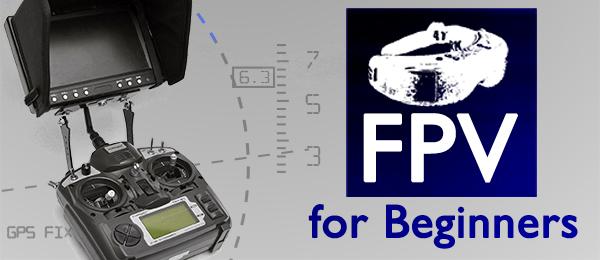Written by Matt Ruddick
Demystifying the two types of goggles
Feature
As seen in the July 2019 issue of Model Aviation.
Bonus Video
Image

Compact Goggles
So, what styles do you choose from? In my experience, FPV goggles usually fit into one of two categories: box-style goggles or compact goggles. Compact goggles are the catchall term I use to describe a typical Fat Shark/Aomway/Skyzone form factor. They are the most common style that you’ll find at a weekend drone race and what you likely envision when someone refers to FPV goggles in the first place. Imagine Geordi La Forge from Star Trek: The Next Generation and you’re pretty close to how these look on a pilot. They are usually slightly more expensive, feature rich, and easier to transport, which is why they’ve become so popular. They utilize two small screens to display the image at varying sizes, depending on the goggles. To line up those screens with your eyes, some sort of IPD adjustment is offered. This adjusts the placement of each screen laterally so that it can be aligned with a pilot’s eyes for optimal viewing. It should be noted that although this is an important feature, it can also be a way to find out if a specific set of goggles is not right for you. For example, many Fat Shark goggles can accommodate an IPD between 59 mm and 69 mm. What this means is that if the distance between your pupils measures narrower than 59 mm or wider than 69 mm, you will likely have a blurry image while using the headset, which will result in a less-than-enjoyable flying experience. However, if you fall into that 10 mm zone, your eyes will line up just fine. You might also need to supply your own video receiver with compact-style goggles. Many manufacturers, such as ImmersionRC, Furious FPV, and U Buy A Drone (UBAD), make modular video receivers that fit Fat Shark headsets, so this will need to be added to your budget. These can range anywhere from $30 to $250, but that’s a subject for another article. Some other goggles, such as Aomway Commander or Skyzone SKY02, have integrated receivers built in, so no additional module is necessary. Most will also have connectivity for external receivers if that is necessary for your setup.Image

Box Goggles
On the other side of the spectrum, you have box goggles. They’re called box goggles because they actually do look like a small box has been strapped to your face, but there are some real positives that come along with this form factor. First, the reason they’re so large is because of the large LCD display that is housed at the end of them. This results in a much larger field of view and a more immersive experience. In some cases, such as with Fat Shark Transformers, you can even remove the panel completely to use as an external monitor when you’re spectating. This can be a big selling point for some. They also eliminate the need for IPD adjustments and are a great choice for those whose IPD falls outside of the range I mentioned earlier. If you happen to wear glasses, box goggles can even sometimes accommodate you without the need to remove them. Of course, this is not the case with all models of goggles or all types of glasses, so your experience might vary. For some, this larger form factor can be more comfortable because it allows for the distribution of weight to be shared across a larger area of your head and will typically have larger straps that provide extra padding. Box goggles generally have a built-in video receiver and will eliminate the need to buy an aftermarket one. You’ll save some money this way, but you will lose the ability to upgrade to better receivers down the road. Although this shouldn’t be a deal breaker, it’s certainly something to consider.
Image

Conclusion
At the end of the day, we all have our preferences when it comes to comfort, functionality, style, and price. Because so many of these goggles are different, the best piece of advice I can offer is to try on as many as you can before you buy. If that’s not possible, try to find online retailers that offer good return policies, in case they don’t fit you the way that you’d like. It’s not all about sporting the latest from the hottest brand when shopping for FPV goggles—it’s all about finding what’s right for you.Image

SOURCES: Fat Shark www.fatshark.com Aomway www.aomway.com/en/home Skyzone (941) 444-0021 www.getfpv.com ImmersionRC [email protected] www.immersionrc.com Furious FPV [email protected] https://furiousfpv.com UBAD www.ubuyadrone.com










Comments
Monitors
I know this article is about goggles but I wish you'd add a section about monitors. I wear glasses and cannot comfortably use either compact or box goggles. I know there are monitors out there and there are even some tricks where you can add velcro and cardboard to protect your viewing from the sun. I haven't been able to find out much about it though.
fpv goggles
I really want to get in to fpv in both multi and fixed wing problem, I have to put a x4 reading glasses over my corrective glasses, opposite of diopters and still not clear enough, I would have to still build a longer box type because I can't focus up that close. my eyes are not that bad I have to use glasses for slight distance correction, but mainly for reading, heck I can even pass the driver licence exam without glasses please help I have tried everthing! ji
Add new comment